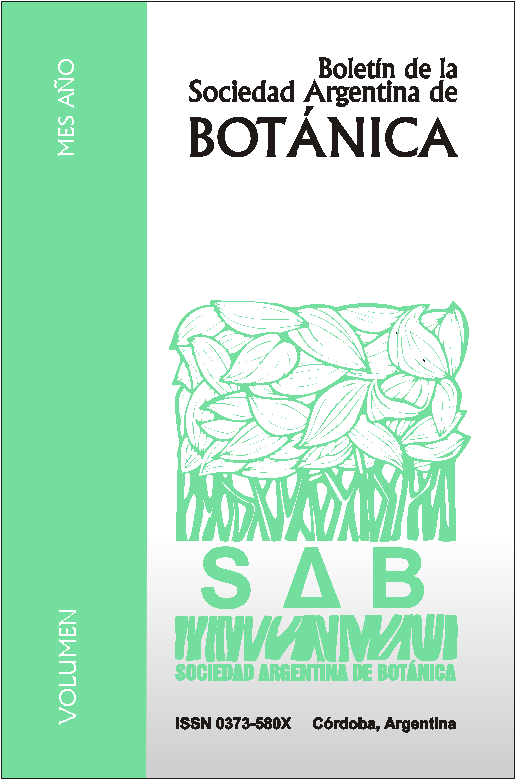Comportamiento germinativo y potencial forrajero de Setaria magna (Poaceae) Germinative behavior and forage potential of Setaria magna (Poaceae)
DOI:
https://doi.org/10.31055/1851.2372.v48.n2.6228Resumen
Summary: Germinative behavior and forage potential of Setaria magna (Poaceae). Setaria magna Griseb. is an American species that grows well in damp, swampy environments either in fresh or salt water. It is an annual, grass with vigorous plants in their natural habitat. In this study the germinative behavior as well as the forage potential of this species were evaluated. Caryopses viability and their germination ability at different temperature regimes were analyzed, by means of different scarification treatments and temperatures from diverse environments and harvest times. Morphological and productive traits in genotypes of a population in vegetative and reproductive states were evaluated in field. Results showed that caryopses viability remained the same during the first year after harvest and then decreased. Covered caryopses did not germinate at any of the temperatures tested, which suggests dormancy, whereas in naked caryopses alternating temperature allowed a greater percentage and velocity of germination. Some morphological traits differed significantly among genotypes on the vegetative state, while no differences were found regarding reproductive state. Biomass quality varied between genotypes and states and proved to be similar to that cited for other widely cultivated species of the same cycle. The results obtained suggest the possibility of domestication of this species.
Key words: Forage potential, germination, dormancy, productivity, selection, domestication.
Resumen: Setaria magna Griseb. es una especie americana que crece en ambientes húmedos y pantanosos de agua dulce o salada. Es una gramínea anual y de ciclo estival, con plantas vigorosas en su ambiente natural. En el presente trabajo se evaluó su comportamiento germinativo y potencial forrajero. Se analizó la viabilidad de las cariopsis y su germinación con diferentes tratamientos de escarificación y temperaturas provenientes de diversos ambientes y años de cosecha. Se caracterizaron morfológica y productivamente a campo, al estado vegetativo y reproductivo. Los resultados mostraron que la viabilidad de las cariopsis se mantiene durante el primer año para luego decrecer. Las cariopsis cubiertas no germinaron a ninguna de las temperaturas ensayadas, sugiriendo la presencia de dormición, mientras que en cariopsis desnudas la alternancia de temperatura permitió aumentar el porcentaje y la tasa de germinación. Algunos caracteres morfológicos difirieron significativamente entre genotipos al estado vegetativo, mientras que ninguna diferencia fue hallada al estado reproductivo. La calidad de la biomasa difirió entre genotipos y estados fenológicos y resultó ser semejante a la citada para especies ampliamente cultivadas de igual ciclo. Los resultados obtenidos sugieren la posibilidad de domesticación de la especie.
Palabras clave: Potencial forrajero, germinación, dormición, productividad, selección, domesticación.
Descargas
Número
Sección
Licencia
El Bol. Soc. Argent. Bot.:
- Provee ACCESO ABIERTO y gratuito inmediato a su contenido bajo el principio de que hacer disponible gratuitamente la investigación al público, lo cual fomenta un mayor intercambio de conocimiento global.

- Permite a los autores mantener sus derechos de autor sin restricciones.
- El material publicado en Bol. Soc. Argent. Bot. se distribuye bajo una licencia de Creative Commons Atribución-NoComercial-CompartirIgual 4.0 Internacional.












